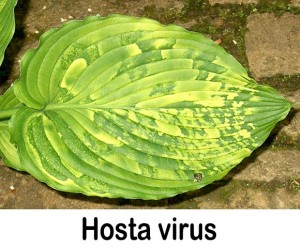 Chlorophyll is that wonder molecule that magically takes the energy of the sun and uses it to combine other elements into sugars and carbohydrates. Without it, we would be a totally different world. Of course, chlorophyll also reflects the green spectrum of light which accounts for the color of most plants.
Chlorophyll is that wonder molecule that magically takes the energy of the sun and uses it to combine other elements into sugars and carbohydrates. Without it, we would be a totally different world. Of course, chlorophyll also reflects the green spectrum of light which accounts for the color of most plants.
So, what is happening when an otherwise green plant suddenly develops another color? Generally, the new color is yellow since that is the underlying color of leaves which is usually overwhelmed by the green of the chlorophyll.
If someone asks why their leaves have turned yellow, the one absolutely certain answer is that it has lost its chlorophyll. This loss of green color is called chlorosis and affected plant tissues are said to be chlorotic. The larger question is, “Why did it turn yellow?”. The answer to that one can get a lot more complicated.
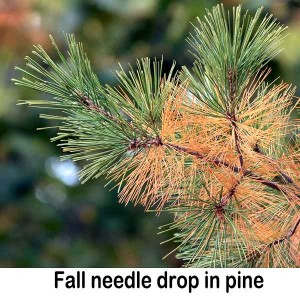 In the autumn of the year when the day lengths shorten, leaves of deciduous plants and the older needles of evergreens turn yellow. At low light levels, the leaves are not capable of maintaining chlorophyll molecules and they fade away. Depending on the species of plant, other pigments such as anthocyanin and carotene may increase depending on weather conditions. That is why some plants have bright orange or red foliage in the fall. Warm, sunny days followed by cool nights will encourage these pigments which explains why the intensity of fall color will vary from year to year.
In the autumn of the year when the day lengths shorten, leaves of deciduous plants and the older needles of evergreens turn yellow. At low light levels, the leaves are not capable of maintaining chlorophyll molecules and they fade away. Depending on the species of plant, other pigments such as anthocyanin and carotene may increase depending on weather conditions. That is why some plants have bright orange or red foliage in the fall. Warm, sunny days followed by cool nights will encourage these pigments which explains why the intensity of fall color will vary from year to year.
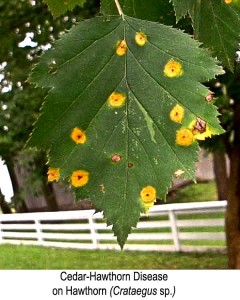 Fungal leaf spot diseases such as apple scab or anthracnose in maples, oaks and sycamores cause leaves to yellow. Needlecast diseases on pine, spruce and fir cause a similar effect on needles. Viruses cause the loss of chlorophyll in a mottled pattern on leaves and stems.
Fungal leaf spot diseases such as apple scab or anthracnose in maples, oaks and sycamores cause leaves to yellow. Needlecast diseases on pine, spruce and fir cause a similar effect on needles. Viruses cause the loss of chlorophyll in a mottled pattern on leaves and stems.
Sucking insects such as aphids, mealybugs and scale remove nutrient laden sap from the plants restricting their ability to make more chlorophyll. Spider mite feeding produces a mottled pattern of yellowing similar to a virus.
Many environmental factors cause a plant to yellow. The most basic is a lack of adequate light. When plants become shaded by other plants or by branches higher up on the same plant, the chlorophyll fades away and the leaves yellow.
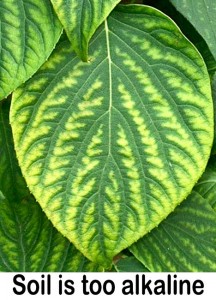 Nutrient deficiencies also cause chlorosis. Nitrogen (N) is a vital component of chlorophyll so inadequate levels of this element make leaves turn yellow. Iron (Fe) deficiencies cause chlorosis between the veins in leaves while the veins themselves maintain their green color. This often occurs when the pH of the soil is too alkaline for acid loving plants such as rhododendrons, azaleas or pin oak trees. Magnesium (Mg) is also part of the chlorophyll molecule which is why Epsom salts (MgSO4) may help in some occurrences of yellow leaves.
Nutrient deficiencies also cause chlorosis. Nitrogen (N) is a vital component of chlorophyll so inadequate levels of this element make leaves turn yellow. Iron (Fe) deficiencies cause chlorosis between the veins in leaves while the veins themselves maintain their green color. This often occurs when the pH of the soil is too alkaline for acid loving plants such as rhododendrons, azaleas or pin oak trees. Magnesium (Mg) is also part of the chlorophyll molecule which is why Epsom salts (MgSO4) may help in some occurrences of yellow leaves.
Too much or too little water can cause yellowing. Under water stress, plants shut down internally and cannot transport nutrients to the leaves. Chlorophyll production can be affected causing loss of green color.
Low temperatures can affect leaf color. Under cool conditions, chemical reactions are slowed and, again, chlorophyll production may be reduced. In some cases, low temperatures can block the uptake of phosphorus resulting in the plant taking on a pinkish cast.
Herbicides (weed killers) may also cause yellowing. Some of these chemicals, including the widely used Round‑Up i.e. glyphosate, work by inhibiting photosynthesis in the plant. Often, they do this by blocking the production of chlorophyll.
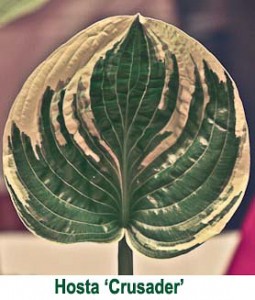 Of course, we gardeners often prize plants that have lost their chlorophyll in parts of their leaves. We call these plants variegated and, in plants such as hosta, they may be the centerpiece of our gardens. A lot of this type of “good” chlorosis is caused by a change i.e. mutation, in the genes of the plant so that some of the cells that should produce chlorophyll are inhibited from doing so. We don’t always know why this happens but when we discover such plants, we tend to value them for their uniqueness.
Of course, we gardeners often prize plants that have lost their chlorophyll in parts of their leaves. We call these plants variegated and, in plants such as hosta, they may be the centerpiece of our gardens. A lot of this type of “good” chlorosis is caused by a change i.e. mutation, in the genes of the plant so that some of the cells that should produce chlorophyll are inhibited from doing so. We don’t always know why this happens but when we discover such plants, we tend to value them for their uniqueness.
The good news for most of these situations is that, if the causative factor i.e. lack of nitrogen, drought, disease, etc. is controlled, the green will often come back. Of course, with the return of longer days in the spring, our trees will once again give us the shades of green that we have come to relish.
